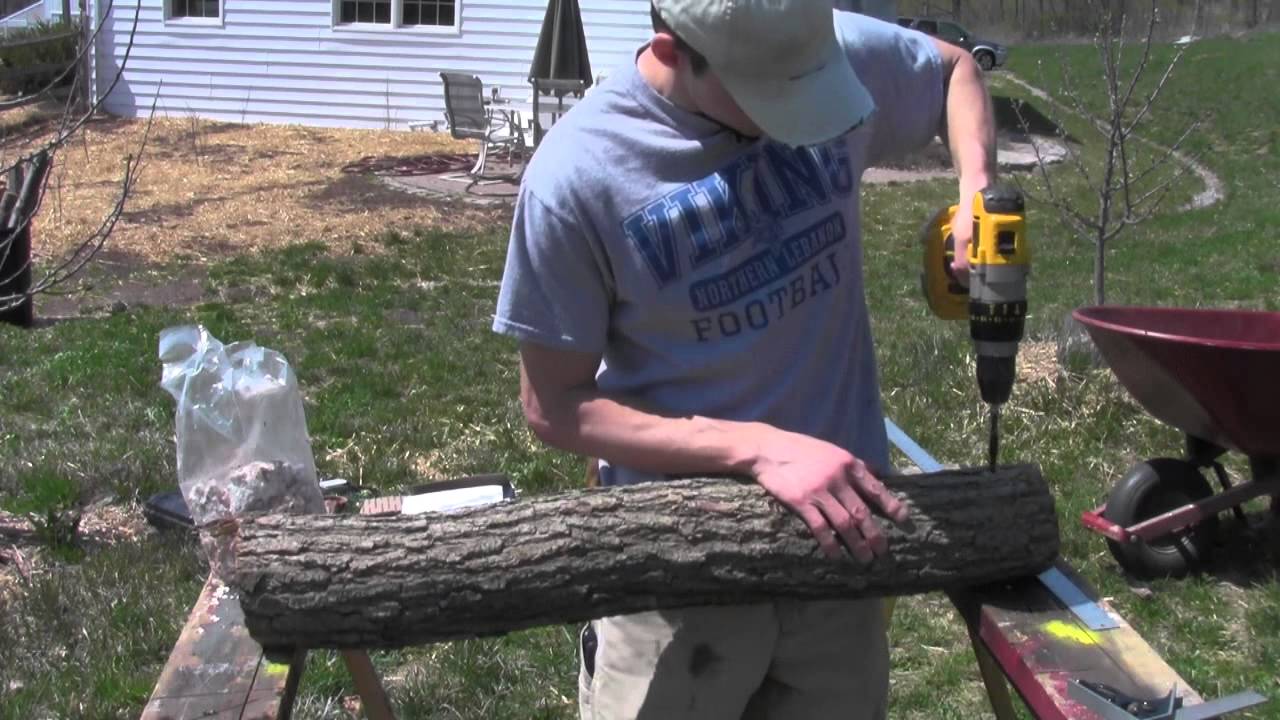Over the past six years, I’ve enjoyed growing healthy fruits, vegetables, meat and eggs. One part of my diet that I’ve overlooked is fungi. Until now, I hadn’t thought of the benefits of including mushrooms as a regular part of my diet. Mushrooms are high in protein, vitamins, minerals, and antioxidants. On the negative side, fresh and dried mushrooms, like Shitakes are expensive. We as gardeners can get around that by growing our own.
1. Choose wood from a healthy hardwood tree. The following trees work well for Shitakes: Alder, Ash, Beech, Chestnut, Eucalyptus, Hickory, Oak, Sweetgum (Most any hardwood species can be used, but the aforementioned work especially well. Stay away from softwoods. Pines, firs, and cedars are especially bad for mushroom inoculation because they contain fungicidal resins in the wood.)
Mushroom Logs
2. Harvest logs when the leaves turn brown. Fall, Winter, or early Spring. Three foot long logs that are 3-6 inches in diameter work well. The trees you cut must be alive. The logs can only sit for up to one month before you inoculate them. Otherwise you risk other fungi colonizing the logs.
3. In the interim time between harvest of the logs and inoculation, store the logs in full shade. If you don’t have full shade, you can use 60-80% shade cloth.
4. When ready to inoculate, place the logs between sawhorses. For plug spawn, use a 5/16” bit and drill 1 inch deep. I made a mark on my bit, so I wouldn’t go too deep. For sawdust spawn, use a 7/16” bit and drill ½ inch under the bark. I used a cordless Dewalt drill and a corded hammer drill. The corded hammer drill was much faster. I ran through batteries pretty quick on the cordless drill.
Drilling the Logs
5. Drill holes in a grid pattern, starting 2 inches from the end of the log, spaced six inches apart along the length and 2 ½” along the perimeter. I actually measured this when I did my first few logs. After twenty logs, I got pretty sloppy with my drilling. It doesn’t have to be exact, though.
Grid Pattern on Finished Log
6. Once the logs are drilled, and drilling is the most time-consuming part, I put the spawn in the holes. For plug spawn, it’s simple. Just push the plugs partway in the hole, and hammer them in. For sawdust spawn, MushroomPeople.com has a handy sawdust spawn inoculation tool. I would highly recommend the tool if you plan on using sawdust. It’s not necessary for plug spawn.
7. Place a thin coat of melted hot cheese wax over each plug or sawdust spawn site. This will help to keep the spawn from drying out. I used a crock pot to keep the wax melted and a wax dauber to apply the wax.
Wax in Crockpot
8. Stack logs in a full-shade site. If you don’t have one, add a 60-80% shade cloth. I stacked my logs in a shady spot behind my house. I also added 70% shade cloth, because the area does get some sun in the middle of summer.
Lean to Stacking
9. Do not let the logs dry out. They should maintain 45-60% internal log moisture content. If it’s dry, you should water for 2-3 hours once or twice a week. Logs drying out is the biggest reason logs fail to produce.
Thanks to MushroomPeople.com for the spawn and much of the information contained in this article.
~ Phil Williams
Phil Williams is a permaculture consultant and designer and creator of the website foodproduction101.com. His website provides useful, timely information for the experienced or beginning gardener, landscaper, or permaculturalist. Phil's personal goals are to build soil, restore and regenerate degraded landscapes, grow and raise an abundance of healthy food of great variety, design and install resilient permaculture gardens in the most efficient manner possible, and teach others along the way.
This is a companion discussion topic for the original entry at https://peakprosperity.com/how-to-grow-shitake-mushrooms-in-logs/
